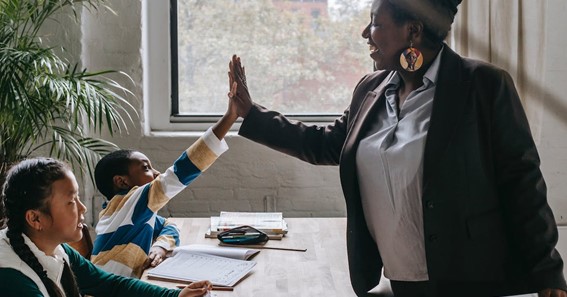Educational activism is all about fighting for change in the education system. It’s about standing up for equal access to quality education, regardless of a person’s race, gender, socioeconomic status, or any other factor. Activists might push for changes in curriculum, educational policies, teaching methods, or resources.
Rosa Parks serves as an inspiring example of educational activism. She showed the world that standing up for what you believe in can spark real, lasting change. To dig deeper into the topic, check a free essay about Rosa Parks available at student platform with essay samples. Today, educational activists continue to fight for equality and justice in the education system, building on the foundation that Parks and others like her laid.
The Students’ Role in Educational Activism
The civil rights movement advanced in large part because of the efforts of students and educators. Especially through their courageous stances taken in the name of education. Students, many of whom were in their teens, bravely challenged the status quo. They staged demonstrations, boycotts, and sit-ins. Some even risked harassment and death by enrolling in previously all-white institutions. The “Little Rock Nine” are a well-known case in point. These nine teenagers attended Central High School in Little Rock, Arkansas, after it was desegregated.
The role of educators cannot be overlooked. Many teachers became involved after witnessing the difficulties faced by their students. They integrated discussions on civil rights into the curriculum. That’s why they shared lessons on fairness and equality. They did advocacy work in the background to ensure that all pupils might benefit from a high-quality education.
Students and faculty alike recognised the transformative potential of education and actively employed it. They realized that achieving full racial equality required first making strides towards educational parity. Their deeds, bravery, and resolve were crucial to the civil rights movement and continue to serve as an inspiration to modern-day activists.
Teachers‘ Efforts
Teachers played an absolutely vital role in the civil rights movement. They often went above and beyond their formal duties.
In the face of widespread racial segregation and discrimination, many educators took it upon themselves to organize initiatives. They developed curricula that challenged the status quo and introduced students to new perspectives, promoting critical thinking and awareness about civil rights issues.
Teachers became champions of tolerance and equality, both in and out of the classroom. They taught lessons that emphasized the importance of respecting all individuals, regardless of race, and encouraged students to challenge prejudiced attitudes and actions. They also worked to create inclusive classroom environments, where every student felt seen, heard, and valued.
But these dedicated teachers did more than just teach — they also empowered their students to become advocates for change. They fostered a sense of agency and responsibility in their students, inspiring them to stand up for their rights and the rights of others. In doing so, they helped mold a new generation of leaders and activists, who would carry the torch of the civil rights movement forward.
Through all these efforts, teachers proved to be not just educators, but also mentors, allies, and advocates. Their tireless work had a profound impact, helping to advance the cause of civil rights and reshape the landscape of the American school system.
Click here – 5 Reasons CBD Gummies Are the Best Format
Equality in Education and the Civil Rights Movement
Brown v. Board of Education of Topeka, Kansas, 1954, is arguably the most well-known court case ever. This Supreme Court ruling declared that segregation in public schools was fundamentally unequal, thus overturning the “separate but equal” theory of Plessy v. Ferguson. This was a huge advance in the battle against school segregation.
As a direct result of this, discrimination on the basis of race, colour, religion, sex, or national origin was made illegal in all federally funded institutions, including schools, by the Civil Rights Act of 1964. The decision in Brown v. Board of Education was bolstered by this. Equal access to education was also facilitated by this.
Another key act was the Elementary and Secondary Education Act (ESEA) of 1965. It improved equity for students from lower-income families. How? With its help, federal funds were given to school districts serving poor students.
These and other legal actions and policies were crucial in breaking down barriers in the school system. They established the principle that every child, regardless of their race, has a right to quality learning. They helped to dismantle the system of segregation and opened doors for equal educational opportunities, setting the stage for further educational reforms in the years to come.
Final Thoughts
Civil Rights Movement. They weren’t just sitting on the sidelines; they were out there making things happen. They stood up, they spoke out, and they totally reshaped the system in America.
Remember the sit-ins, the protests, the lessons about equality? All of that stuff made a huge difference. And the payoff was massive – landmark court decisions, laws, policies that tore down the walls of segregation, and made learning equal for everyone.
So, what’s the takeaway from all this? Simple: Education has power. Major power. Power to change minds, power to change laws, power to change the world. The students and teachers of the Civil Rights Movement got that, and they used it to fight for justice.

